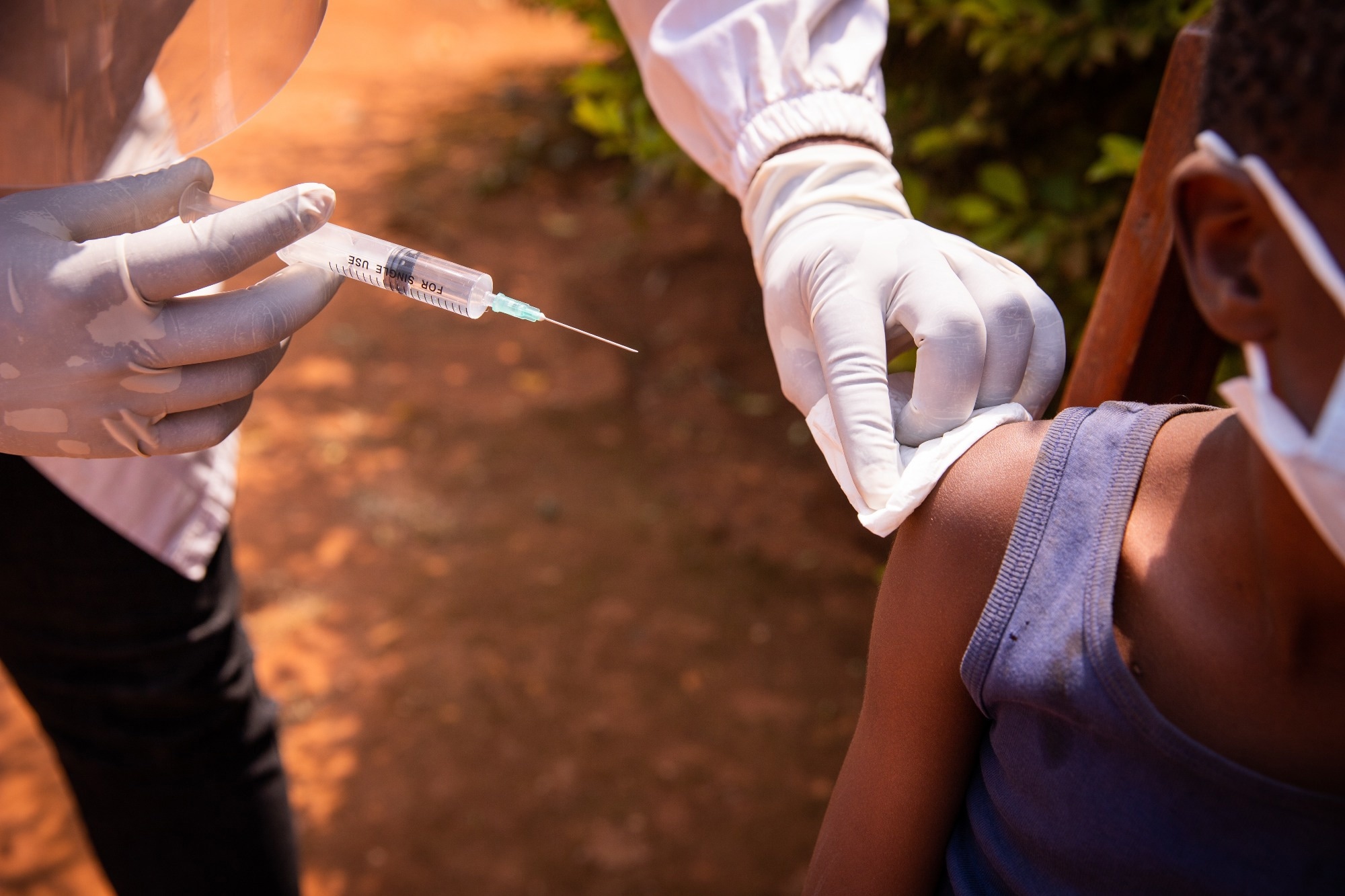In response to the coronavirus disease 2019 (COVID-19) pandemic, several vaccines were produced and rolled out at an unprecedented rate—however, access and cost issues limited vaccine delivery in many parts of the developing world.
A new study in the journal Nature reports on the success of Sierra Leone’s immunization program against COVID-19, which is based on a simple, cost-effective, and scalable intervention that enhances access to vaccines.
 Study: Last-mile delivery increases vaccine uptake in Sierra Leone. Image Credit: Media Lens King / Shutterstock.com
Study: Last-mile delivery increases vaccine uptake in Sierra Leone. Image Credit: Media Lens King / Shutterstock.com
COVID-19 vaccine inequity
COVID-19 vaccines were first rolled out in December 2020. However, by March 2022, only 15% of the population in low-income countries (LIC) had received at least one dose compared to 80% in high-income countries (HICs).
The hazards associated with low vaccine coverage include the possibility of new surges and subsequent lockdowns, unemployment, loss of income, food insecurity, and the emergence of dangerous new variants and subvariants.
By March 2022, only one-third of Africa’s population received a single COVID-19 vaccine dose. In Sierra Leone, previous research showed that, on average, a person had to travel seven hours to access one dose of the vaccine and that the cost of access to the vaccine was equivalent to a week’s wages.
The intervention
In partnership with the Sierra Leone Ministry of Health and Sanitation (MoHS) and international non-governmental organization (NGO) Concern Worldwide, the authors of the current study designed and executed an intervention aimed at distributing vaccines to remote villages. The permission of the local community was first sought, followed by efforts to mobilize the community in the vaccination initiative.
The current intervention was a randomized controlled trial (RCT) in rural Sierra Leone that included 150 villages. All of these were outside the five-kilometer radius of primary health units (PHUs) offering COVID-19 vaccines in the area. Of these, 100 villages were involved in the intervention, with 50 serving as controls.
The villages were small, with about 200 individuals for each village, with a total of just over 20,000 individuals participating in the trial. The mean age of these individuals was 22 years, with approximately 75% of households headed by men. Farming was the primary occupation of the head of the household in 86% of cases.
The first day of the intervention involved community mobilization with all village elders and political, youth, and religious leaders, with the help of MoHS volunteers. That night, a community meeting was held to educate the people about the vaccine, its safety, effectiveness, and importance, as well as answer questions.
The next day was devoted to setting up the temporary vaccination site with vaccine delivery workers, MoHS staff for data collection, and vaccine doses. Vaccines were available for the next two to three days, from sunrise to sunset, and community mobilization continued. Individual, door-to-door, small group or randomly selected houses were some of the tested outreach strategies.
The results
Daily vaccination uptake increased from nine to 55 people in two to three days, with the vaccination rate rising by 26 percentage points. The initiative attracted large numbers of people from neighboring areas and transients. Overall, about 5,000 people were vaccinated.
At baseline, the average vaccination rate was 6% and 9% in control and treatment villages, respectively. After the intervention, treatment villages reported a 30% vaccination rate, which rose to over 70% by December 2022, with nearly eight million doses delivered by March 2023.
About 65% of those who attended the meetings took the vaccine, compared to 40% among non-attendees. Conversely, about 53% of attendees who were initially unwilling to take the vaccine did so after attending the meetings, compared to only 14% of non-attendees.
The cost for each administered vaccine dose was about $33. If repeated with the same vetted and trained volunteers, this cost would reduce to about $23 for each person, thereby facilitating large-scale or nationwide efforts.
Compared to over 200 similar interventions offered during 144 RCTs, including financial and other incentives, social motivation, and community engagement, the intervention discussed in the current study produced a more significant effect size than 95% of the others at a lower cost.
These results suggest that low vaccination rates are related to deficiencies in access and that a cost-effective intervention is capable of overcoming that deficiency.”
What this means for the future
The approach employed in the current study could have significant impacts on public health around the world by encouraging delivery programs to immunize remote communities if these individuals cannot reach vaccine delivery centers. In Bangladesh, similar efforts have increased the infant vaccination rate from 1% during the early 1980s to over 70% by the 1990s.
Bundling interventions to improve maternal and child health could also reduce healthcare delivery costs, as transport to remote locations accounted for a significant portion of associated costs. Thus, providing access to remote locations in LICs is fundamental in promoting vaccination of the first 50% of the population.
Prominent behavioral scientists have recently acknowledged our excessive focus on individual behavioural peculiarities (‘i-frame’) at the expense of systemic solutions (‘s-frame’).”
The current study demonstrates the striking efficiency and cost-effectiveness of a community-based vaccine intervention that benefited the local community and neighboring and migrant populations. Future applications of the approach employed in this study have the potential to improve vaccine uptake rates and ensure near-universal coverage to ultimately increase vaccine equity.
Journal reference:
- Meriggi, N. F., Voors, M., Levine, M. et al. (2024). Last-mile delivery increases vaccine uptake in Sierra Leone. Nature. doi:10.1038/s41586-024-07158-w.